Nestled among the breathtaking landscapes of Northern Vietnam, Sapa is not just a haven for adventurers but also a culinary treasure trove. With its lush terraced rice fields and the backdrop of towering mountains, the region is rich in local gastronomy that tells the story of its diverse ethnic cultures. Every dish carries a piece of the land and its people, a flavor profile that is as complex as the vibrant communities that inhabit this region. From hearty stews to delectable street snacks, Sapa’s culinary offerings provide a rich tapestry of tastes and traditions that are waiting to be discovered.
As you wander through the bustling markets and quiet villages, the aroma of traditional dishes wafts through the air, inviting you to indulge in an experience that is both satisfying and memorable. “Must-try traditional dishes” are highlights of local cuisine that connect you to the essence of Sapa’s heritage. Whether it's the comforting warmth of a communal stew or the fresh flavors of local produce, each meal is a celebration of the region's rich agricultural bounty, infused with the heartfelt hospitality of its people. In Sapa, food is more than nourishment; it is a medium of connection, culture, and community.
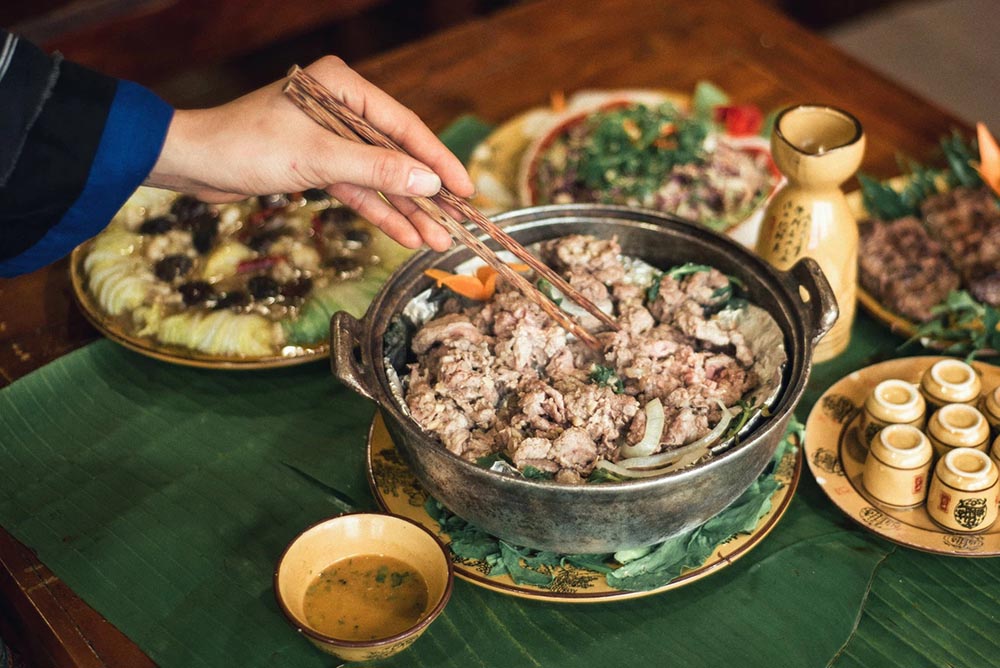
Exploring Sapa's culinary landscape unveils an array of traditional dishes that showcase the unique flavors and ingredients of the region. Thang Co, a signature dish steeped in history, represents not only the palate of the H'mong people but also their communal spirit. Similarly, cap nach pork celebrates local farming practices, while the salmon and sturgeon hotpot highlights Sapa’s innovative approach to fresh regional seafood. These dishes are more than just food; they embody the traditions, resources, and stories of Sapa's vibrant cultural tapestry. Each plate offers a glimpse into the local way of life, captured through age-old recipes and traditional cooking methods.
Sapa’s cuisine also reaches beyond meat and fish, bringing in dishes like sticky rice cooked in bamboo tubes (or Com Lam), which reflects the resourcefulness of the ethnic communities. Moreover, sweets like chestnut cake showcase Sapa's agricultural products in a delightful yet simple way. These iconic foods bring tourists and locals together, forming bridges through shared meals and collective joy. In this culinary exploration, one can savor not just flavors but the very essence of Sapa itself.
Thang Co, truly the iconic dish of Sapa, serves as a culinary ambassador of the region. Translating to “big pot of water” in the H'mong language, this hearty stew signifies much more than just a meal; it embodies tradition, connection, and warmth. Steeped in history, Thang Co traces its roots back over 200 years among the H'mong people. It is prepared by simmering an assortment of meats, typically horse meat, but also may include beef, pork, or buffalo, and is flavored with plentiful fresh herbs and spices found in the Sapa region.
During cold weather conditions, the dish becomes a symbol of comfort and shared moments, served in magnificent large pots at the local markets or during communal gatherings. The preparation itself is an art; vendors who have perfected their craft create an unforgettable experience, bringing communities around shared feasts that resonate with laughter and storytelling.
The unique combination of spices often cited to include up to 12 different herbs and roots adds depth and complexity to the dish, creating layers of flavor that make each spoonful a warmth-inducing delight. The communal aspect of Thang Co is equally important; as people gather around the pot, it becomes a melting pot of community spirit.
In the end, dining on Thang Co is not just about the meal but sharing stories and culture that have been passed down through generations. This dish truly captures the spirit of Sapa, illustrating how food can forge connections and transform strangers into friends.
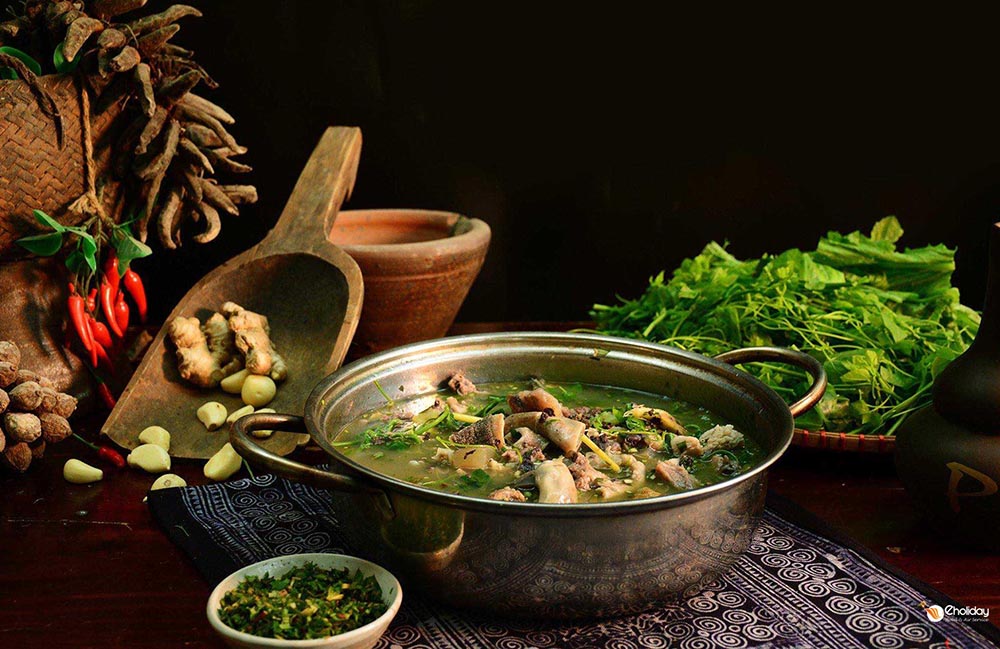
Cap nach pork, known locally as thit lon cap nach, is a culinary gem that proudly represents Sapa’s agricultural heritage. The flavor profile of this specialty pork is unlike any other; raised naturally in the mountainous terrains of Sapa, these pigs roam freely, allowing them to develop a uniquely rich, lean meat that stands out for its aroma and taste. If Thang Co embodies communal dining, cap nach pork evokes the beauty of Sapa's unspoiled nature.
Often prepared through traditional methods, cap nach pork is grilled or roasted, seasoned with an array of vibrant local herbs and spices. This cooking style enhances the natural flavor of the meat while retaining its juiciness. The meat's texture is firm, yet tender, a beautiful culinary paradox that delights the senses.
Visiting local eateries, you'll experience the joy of devouring cap nach pork alongside freshly harvested vegetables and herbs from Sapa’s bountiful fields. The simplicity of its preparation belies the complexity of its flavor, telling a story of the land and the seasons.
The dish also reflects the sustainability of local food practices; by utilizing responsibly farmed pork, it supports the livelihood of the local communities and emphasizes the importance of biodiversity in the region. There’s a palpable pride that comes with enjoying this local delicacy one that’s been shaped by generations of family recipes and farming techniques. In many ways, cap nach pork is a celebration of Sapa itself, deliciously encapsulating the region's ethos of harmony with nature and community spirit.
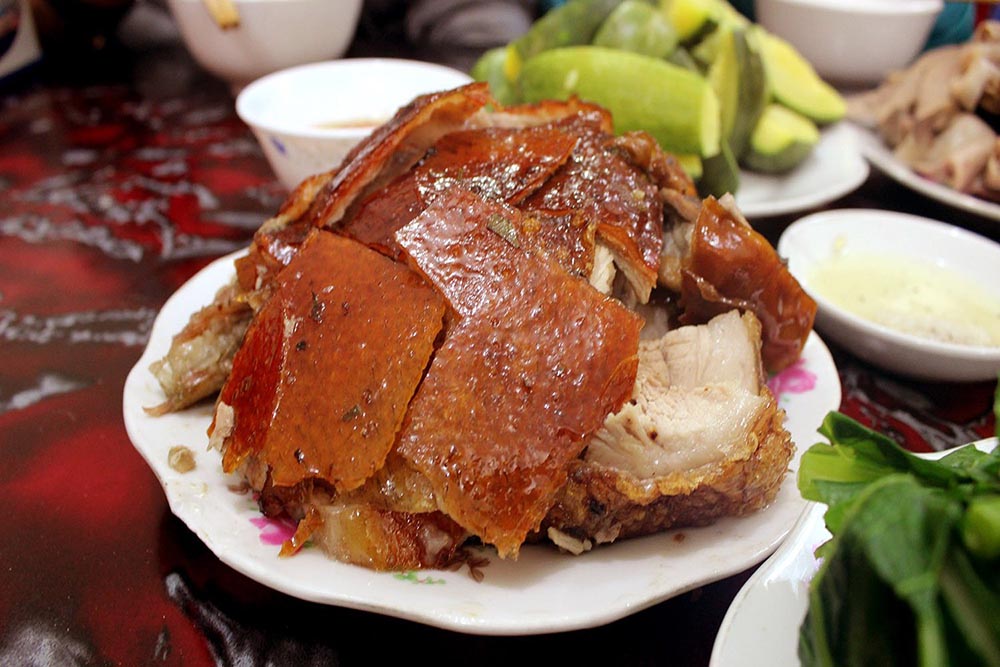
The salmon and sturgeon hotpot, or lẩu cá tầm, finds its roots deeply embedded in Sapa's unique aquatic resources. This dish symbolizes not just the bounty of the region's waters but also the innovative culinary spirit that thrives here. Sapa’s cool climate creates an ideal environment for both salmon and sturgeon farming, resulting in fish that boast a firm texture and rich flavor.
What sets this hotpot apart is its preparation, where the fish is simmered in a robust, aromatic broth enriched with fish bones, fresh herbs, and seasonal vegetables. Each ingredient plays a vital role; the vegetables provide a refreshing crunch, while the mushrooms impart earthiness to the dish. As the pot simmers, the melding of flavors creates an inviting aroma that draws diners in.
Visitors often savor this hotpot during the cooler months, as it serves as a nutritious and fulfilling meal perfect for gathering friends and family around the table. The communal aspect of this dish fosters a warm atmosphere, making it a quintessential experience in Sapa dining.
The salmon and sturgeon hotpot not only showcases local ingredients but also reflects the creativity inherent in Sapa’s food culture. It stands as a testament to the evolving nature of traditional dishes, bridging innovation and tradition seamlessly.
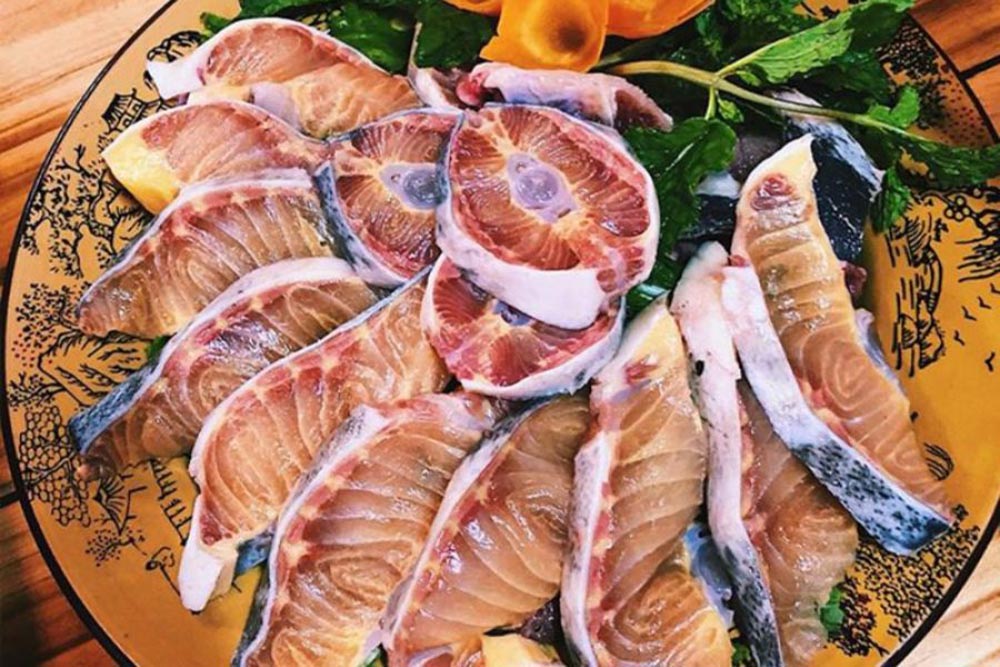
Sapa's culinary landscape is rich not only in flavors but also in unique cooking techniques that have been carefully honed over generations. The indigenous communities have developed methods that are rooted in their environment, showcasing their creativity and resourcefulness. Traditional cooking in Sapa often emphasizes communal experiences and seasonal ingredients, making dining a collective venture.
For example, many dishes feature the traditional use of bamboo tubes, where rice is cooked inside, infusing it with a unique smoky flavor. Another technique involves grilling, particularly for meats and fish, which enhances the natural taste while preserving the freshness of the ingredients. Such practices not only highlight the local resources but also reflect the principles of sustainability and respect for nature that are prevalent in Sapa’s culture.
By immersing yourself in Sapa’s unique cooking techniques, you encounter meals that are more than just sustenance; they become a celebration of community and environment. Each dish tells a story of tradition, innovation, and locality an exploration worth savoring.
One of the most captivating dishes you’ll encounter in Sapa is Com Lam, or sticky rice cooked in bamboo tubes. This traditional recipe encapsulates the genius of local culinary techniques, making perfect use of the abundant bamboo found in the area. The method of cooking rice in bamboo tubes is not only practical but also adds a distinct character to the dish.
The results are sensational; once cooked, the sticky rice becomes remarkably fluffy and aromatic, its flavors enhanced by the bamboo and banana leaves. The smokiness creates a subtle yet delightful infusion, adding depth to the otherwise sweet and soft rice.
Com Lam is often served alongside grilled meats, vegetables, or peanuts, offering a delightful balance that enhances the dining experience. The use of bamboo for cooking rice harkens back to Sapa’s storied past, representing a resourceful way of life that today’s chefs have embraced with pride.
This dish highlights not just the ingenuity of local cooking methods but also the interconnection of food and culture in Sapa. As you savor Com Lam, you are not merely enjoying a meal; you are partaking in a tradition that binds the community to the land.
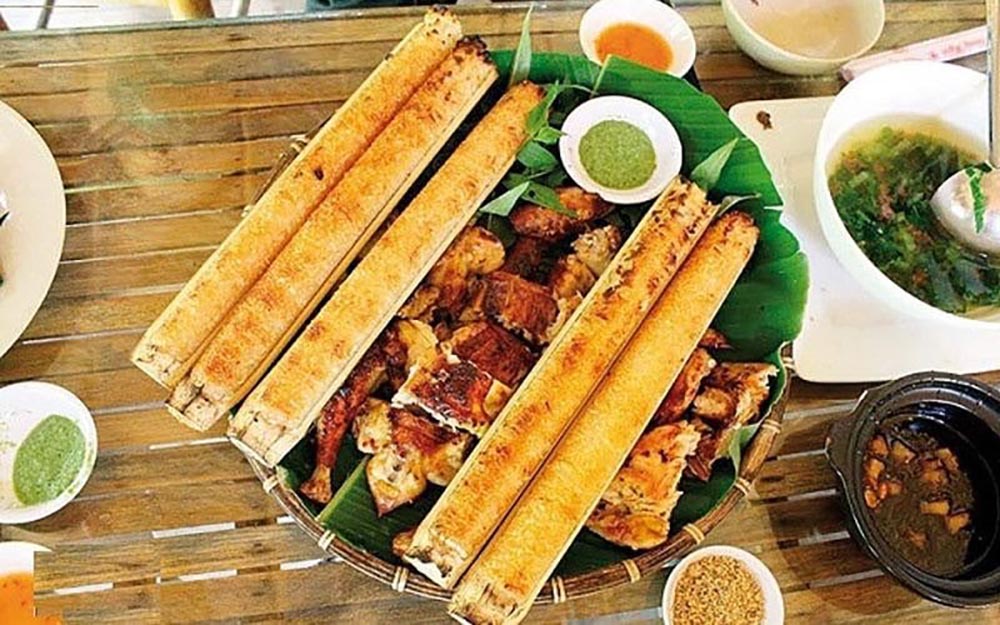
The Mèn Mén, or steamed cornmeal, is a reflection of the Hmong people’s agricultural heritage and their love for tradition. Created from locally grown corn, this dish is a staple among the Hmong, showcasing the simplicity and richness of their everyday meals.
The preparation of Mèn Mén involves a meticulous process of mixing the cornmeal with water to form a dough, which is then steamed twice. The simplicity of this dish offers a pure corn flavor that speaks to the heart of Sapa’s culinary traditions. Served with rich soups or alongside grilled meats, Mèn Mén becomes a versatile dish, narrating a story of resourcefulness and comfort.
In the context of Sapa’s food culture, Mèn Mén stands as a testament to the importance of corn in local diets, providing nourishment and satisfaction amid the ruggedness of the landscape. It evokes a sense of nostalgia, connecting generations through a shared love for the land and its produce.
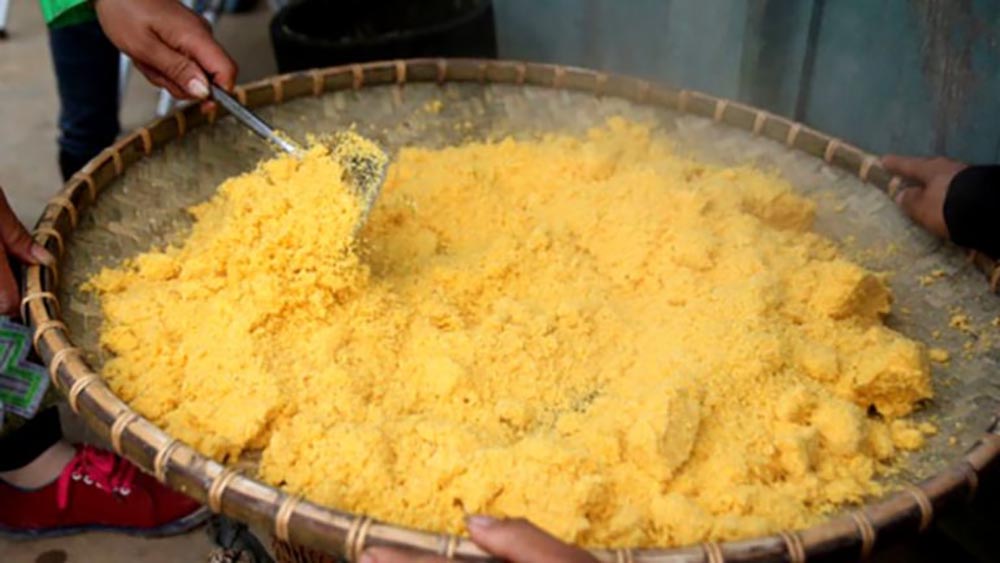
One cannot visit Sapa without encountering the visually striking Xôi Ngu Sắc, or five-colored sticky rice. This dish beautifully embodies the essence of harmony and balance that is central to the Tay ethnic group's culture.
The vibrant colors of Xôi Ngu Sắc are not just for show; they represent the five elements of nature, embodying a cultural significance that resonates deeply within community celebrations. Often enjoyed during festive occasions, this dish is a feast for the eyes, further enhanced by its gentle sweetness.
What sets Xôi Ngu Sắc apart is its versatility while it can be served as a standalone dish, it's often paired with meats or enjoyed as a snack. The communal aspect of sharing such a visually delightful dish strengthens bonds among friends and family.
In Sapa, Xôi Ngu Sắc transcends mere sustenance; it becomes a medium for storytelling and cultural pride, nurturing connections through the beauty of food.
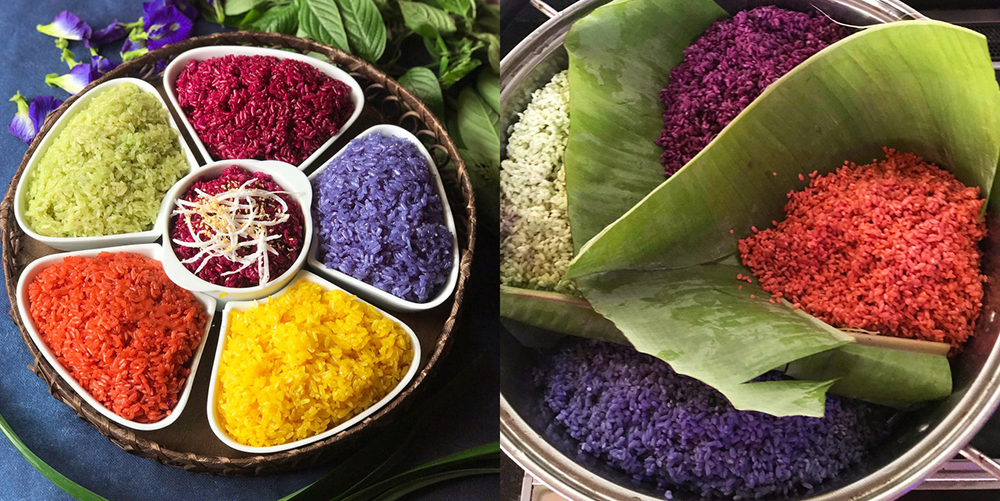
Diving into the heart of Sapa’s culinary scene reveals how local ingredients shape its unique flavors and traditions. Sapa's diverse ecosystems allow for an array of ingredients, from fresh herbs to rare vegetables, each contributing to the region's distinct culinary voice. The cool climate and lush landscapes provide fertile ground for traditional crops, while the mountains yield herbs and spices that are essential to local dishes.
From local vegetables to seasonal herbs, the ingredients used in Sapa's cuisine are integral to creating authentic and rich flavors that visitors have come to cherish. Emphasizing fresh and local produce not only supports nutrition but also honors the agricultural practices of the region. This focus on local ingredients fosters a sense of sustainability, reflecting the community’s commitment to preserving their land and culture.
As you explore the culinary landscape of Sapa, there’s an underlying narrative about respecting the ingredients, a journey that connects you to the very roots of the community. Understanding the significance of these components offers a deeper appreciation for Sapa’s food highlighting how each dish is a product of its environment, history, and the love of its people.
Fresh herbs and spices are the lifeblood of Sapa’s culinary canvas, with their presence transforming simple dishes into explosions of flavor and fragrance. Varieties such as coriander, mint, and lemongrass are woven throughout many meals, enhancing the overall taste and aroma. These herbs are not just garnishes; they are integral to the identity of Sapa’s cuisine.
In particular, the use of wild herbs, often foraged from the surrounding mountains, highlights the connection between Sapa's people and their environment. They add a distinctive character to iconic dishes such as Thang Co, where the interplay of flavors elevates the experience of eating to something memorable.
Spices like black pepper and ginger imbue warmth, serving as a foundation that deepens the flavor profiles of various dishes. The famous twelve spices used in Thang Co illustrate how deeply ingrained these elements are within local gastronomic tradition.
Every meal in Sapa tells a story of the land; the fresh herbs and spices embody the essence of Sapa’s agricultural bounty, showcasing the vibrant life that thrives here. As you indulge in the richness of Sapa’s dishes, you simultaneously engage in an exploration that connects you to its community, culture, and history.
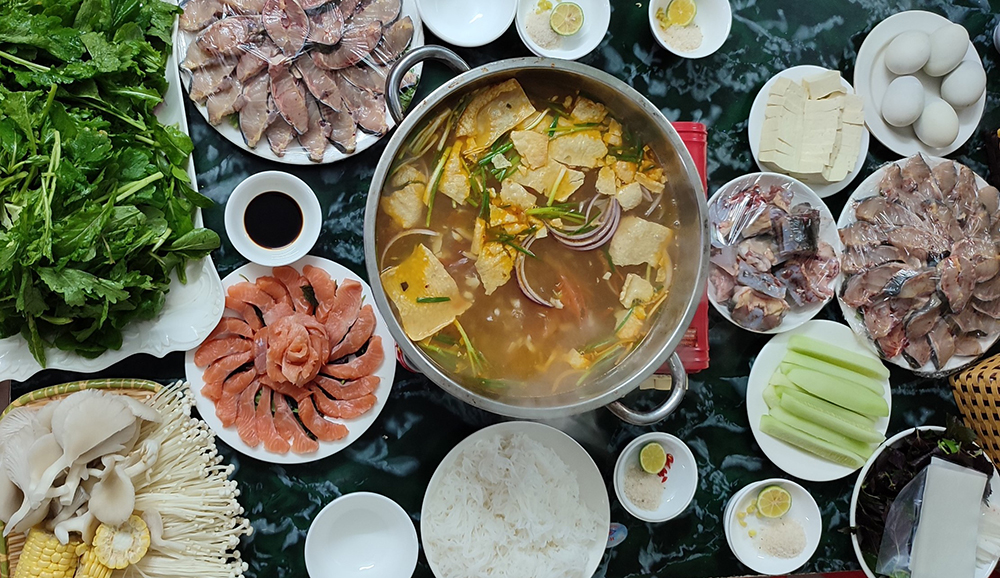
Integral to Sapa’s cuisine, local vegetables such as Mam Da reflect the region's agricultural diversity and culinary creativity. This unique vegetable, often likened to broccoli, is sweeter and has a more enticing aroma, adding not just nutrition but also complexity to local dishes.
Traditionally, Mam Da is prepared simply, often boiled and accompanied by fish sauce, or stir-fried with other ingredients, showcasing its versatile nature. This approach highlights the importance of fresh, local vegetables in providing sustenance while contributing to the vibrant flavors of Sapa's meals.
The significance of Mam Da extends beyond its taste. It exemplifies the relationship that Sapa’s communities have with their land, reinforcing the ethos of seasonal eating. Locally-sourced vegetables emphasize the sustainability aspect of their diets, reinforcing a commitment to knowing and appreciating where food comes from.
As you savor a meal enriched with Mam Da, you are invited to consider the cultural richness it represents a connection to the people, the environment, and the deep-rooted traditions of Sapa’s culinary heritage.
Sapa’s stunning landscape is not only limited to mountainous terrains; it also features pristine streams that are home to a variety of freshwater fish, which play a significant role in local cuisine. Grilled stream fish exemplifies the region's reliance on its natural resources, ingeniously combined with traditional cooking methods.
The process of grilling stream fish showcases the simplicity that defines Sapa’s culinary practices. The fish is typically caught fresh, marinated with a blend of native herbs and spices, and then cooked over open flames, allowing the natural flavors to shine through. This method preserves the delicate taste, ensuring that each bite is a testament to the freshness of the ingredients.
Moreover, the act of catching and grilling fish mirrors the lifestyle of the people in Sapa, emphasizing a strong connection between community and environment. Fishermen often grill their catches right by the riverbank, surrounded by friends and family a culinary practice that emphasizes togetherness.
As you enjoy grilled stream fish, it serves as a delicious reminder of Sapa's stunning natural offerings. The flavors of the region come alive, drawing you into the spirit of a local culture that prides itself on simplicity, quality, and connection to the earth.
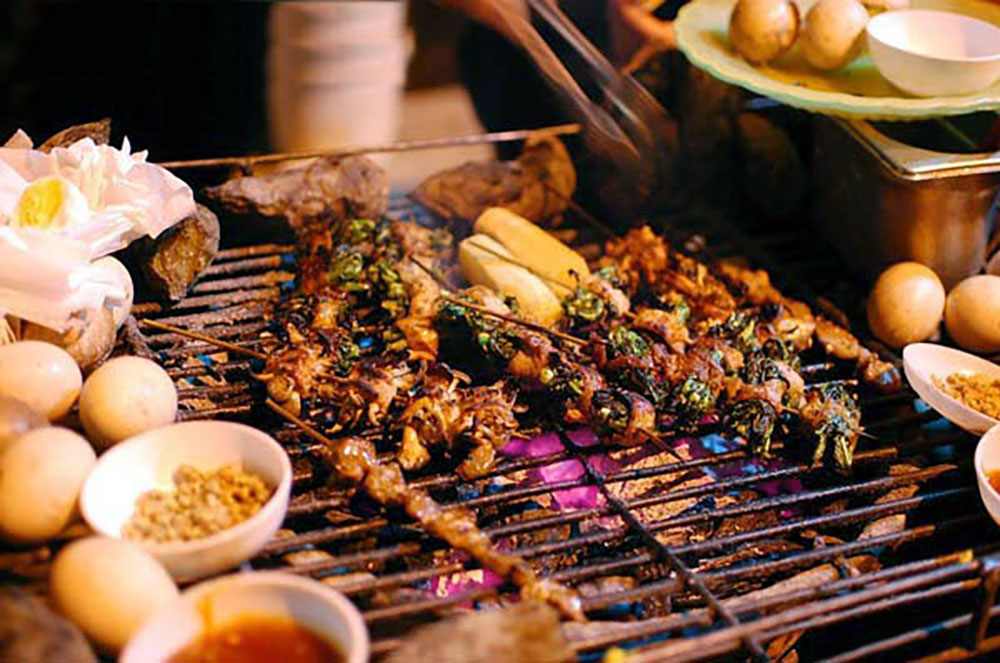
Aside from traditional meals, the street food scene in Sapa offers a myriad of delicacies that invite exploration. Each option presents an opportunity to indulge in authentic flavors that tell stories of the local lifestyle. Street food is synonymous with vibrancy and energy, reflecting the bustling markets and lively night scenes that characterize this charming town.
The intersection of local ingredients and traditional cooking methods manifests in delicious offerings like chestnut cake (Bánh hạt dẻ) and dried buffalo meat (Thịt trâu gác bếp). Each of these treats provides a unique taste that exemplifies the culinary creativity and rich agricultural practices found in Sapa, making street food an essential part of the Sapa experience.
These culinary gems not only capture the essence of local taste but also contribute to the vibrant social atmosphere that street food engenders, making it a must-try for anyone looking to delve deep into Sapa’s rich gastronomic landscape.
Bánh hạt dẻ, or chestnut cake, is a beloved street food delicacy that showcases the essence of Sapa's local ingredients. This simple yet delightful treat features a crispy, golden-brown pastry shell filled with ground chestnuts, reminiscent of the rich agricultural heritage of the region.
The delightful contrast between the flaky texture of the pastry and the creamy sweetness of the chestnut filling has made Bánh hạt dẻ a popular choice among both locals and tourists. Vendors often showcase these treats at vibrant street markets, offering fresh batches that invite all to indulge.
This cake goes beyond just being a snack; it embodies the spirit of Sapa's delightful culinary offerings, where every bite is a reflection of the local environment. Its affordability makes it accessible to everyone, inviting those exploring Sapa to enjoy the rich flavors indicative of the area’s culinary identity.
Grabbing a chestnut cake from a street vendor not only satisfies a sweet tooth but also provides a glimpse into Sapa’s distinctive food culture. It is a sweet treat that connects visitors with the local community, celebrating tradition and local agriculture through its delightful flavor.
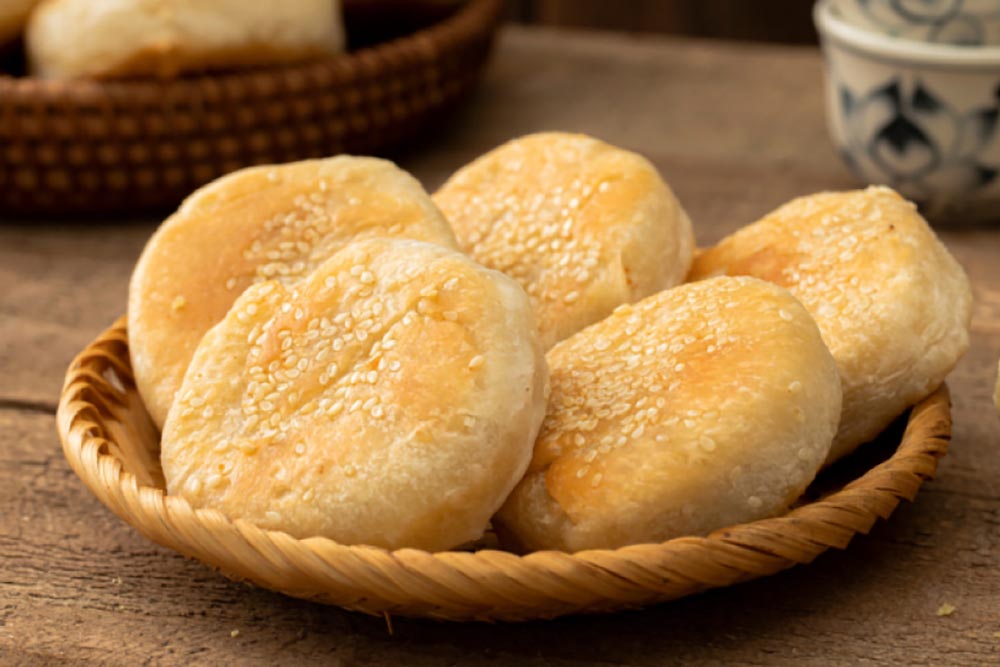
Dried buffalo meat, or Thịt trâu gác bếp, is revered in Sapa as a quintessential street food that packs a punch of flavor. This savory snack is made from marinated buffalo meat seasoned with salt, pepper, garlic, and ginger, creating a unique flavor profile that is both intense and satisfying.
The traditional preparation process involves hanging the marinated meat by a smoky hearth, allowing it to dry over time, blending flavors that enhance its natural taste. This method not only preserves the meat for extended periods but also imparts a delightful smokiness that enhances every bite.
Dried buffalo meat has become a staple in the diets of both locals and visitors, often enjoyed as a convenient trail snack. It showcases the ingenuity of Sapa's food culture, where every morsel carries a history of preservation techniques and local flavors.
As you wander through the bustling streets of Sapa, nibbling on dried buffalo meat, you connect with the rich tapestry of the region’s culinary story one that is a testament to tradition and taste.
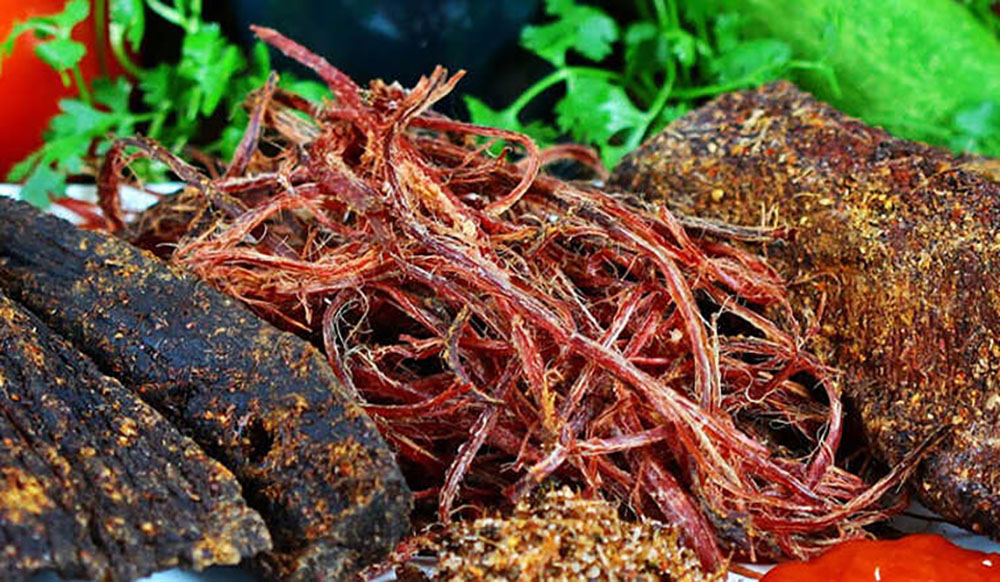
Sapa's night markets come alive with a vibrant array of grilled food options, appealing to the senses of locals and tourists alike. The lively atmosphere and enticing scents create a unique experience as people gather to socialize and enjoy delicious grilled delicacies.
Imagine walking through the bustling market, where the sizzling sounds of marinated meats grilling over open flames draw you closer. Each vendor presents their unique take on local cuisine, offering staples that reflect Sapa's rich culinary culture. The smoky aroma intertwines with laughter and chatter, creating a convivial atmosphere that enhances the overall experience.
The practice of grilling in Sapa is not merely about cooking; it is about connecting with the community, sharing stories, and indulging in a tradition that reflects the landscape’s bounty.
Grilled foods serve as a focal point of social engagement; they invite interaction, create memories, and inspire appreciation for Sapa's varied culinary traditions. A night in Sapa's markets, surrounded by delightful scents and flavors, is sure to leave a lasting impression, making the culinary adventure an unforgettable highlight of your journey.
In conclusion, Sapa's culinary landscape serves as a vibrant tapestry woven from the region's rich cultural heritage and agricultural bounty. The diversity of local dishes, unique cooking techniques, fresh ingredients, and street food delicacies all contribute to an unforgettable gastronomic experience. As visitors explore both the traditional and contemporary flavors of Sapa, they become part of the journey that connects food, culture, and community. Every meal tells a tale, bridging generations and showcasing the heart and soul of this beautiful region in Northern Vietnam.